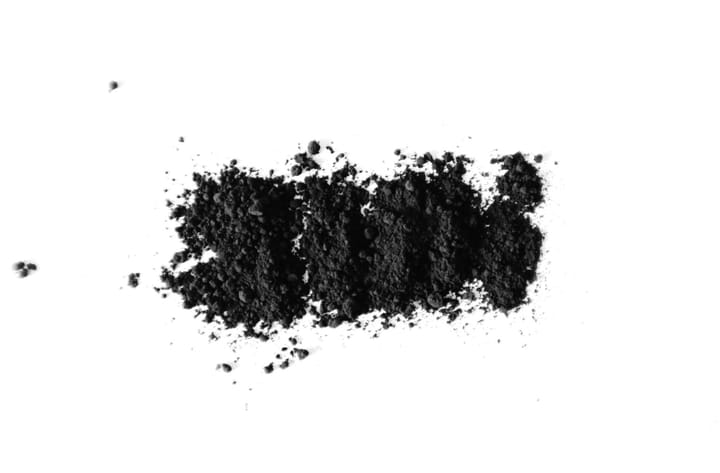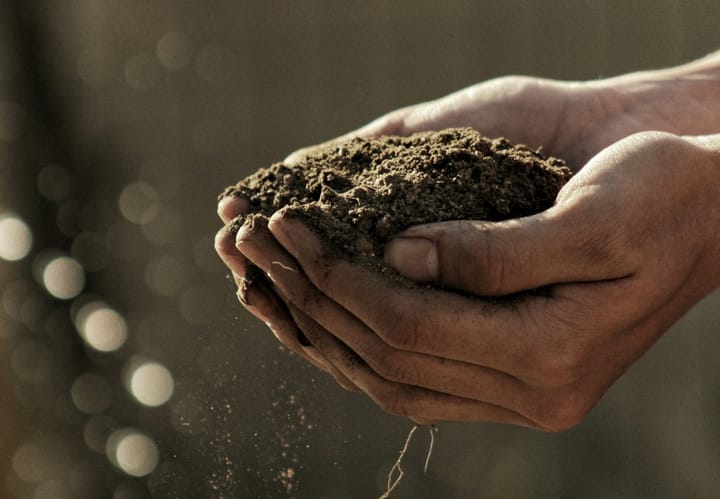What is PON?
PON soil, also known as "pon," is a specialized growing medium that eschews traditional soil components in favor of a soilless blend.

This substrate is primarily made from natural mineral ingredients like pumice, zeolites, and lava rock. It often includes slow-release fertilizers.
These components work together to create a highly porous structure that facilitates excellent air and water circulation around plant roots.

By opting for a soil alternative like pon, plant enthusiasts can expect a well-regulated moisture environment for their plants.
The risk of overwatering is reduced due to its superior drainage properties. Additionally, because it doesn't compact like regular soil, the roots have ample room to grow and breathe, which is vital for healthy plant development.
As a result, pon is particularly popular for indoor plant cultivation, where managing water and nutrients can be more challenging.
Key Takeaways
- Pon is a soilless planting medium made from natural minerals and incorporates slow-release fertilizer.
- It offers enhanced air and water circulation, preventing root compaction and overwatering.
- Pon is beneficial for indoor gardening, ensuring a balanced moisture and nutrient environment for plants.
What is PON?
PON is a type of growing medium designed to support plant growth by providing an optimal balance of air and moisture. Unlike traditional soil, PON is a soilless substrate composed of inorganic materials.
When you use PON for plants, you're opting for a modern approach that can simplify plant care routines.
Composition of PON:
- Pumice: Enhances aeration
- Lava Rock: Retains moisture
- Zeolite: Captures nutrients
One notable brand of PON is Lechuza PON, which is especially popular among indoor gardening enthusiasts.
Lechuza PON is often used in semi-hydroponic systems thanks to its effective moisture distribution. The materials within PON absorb water while allowing excess to drain, thus avoiding waterlogging and promoting healthy root growth.
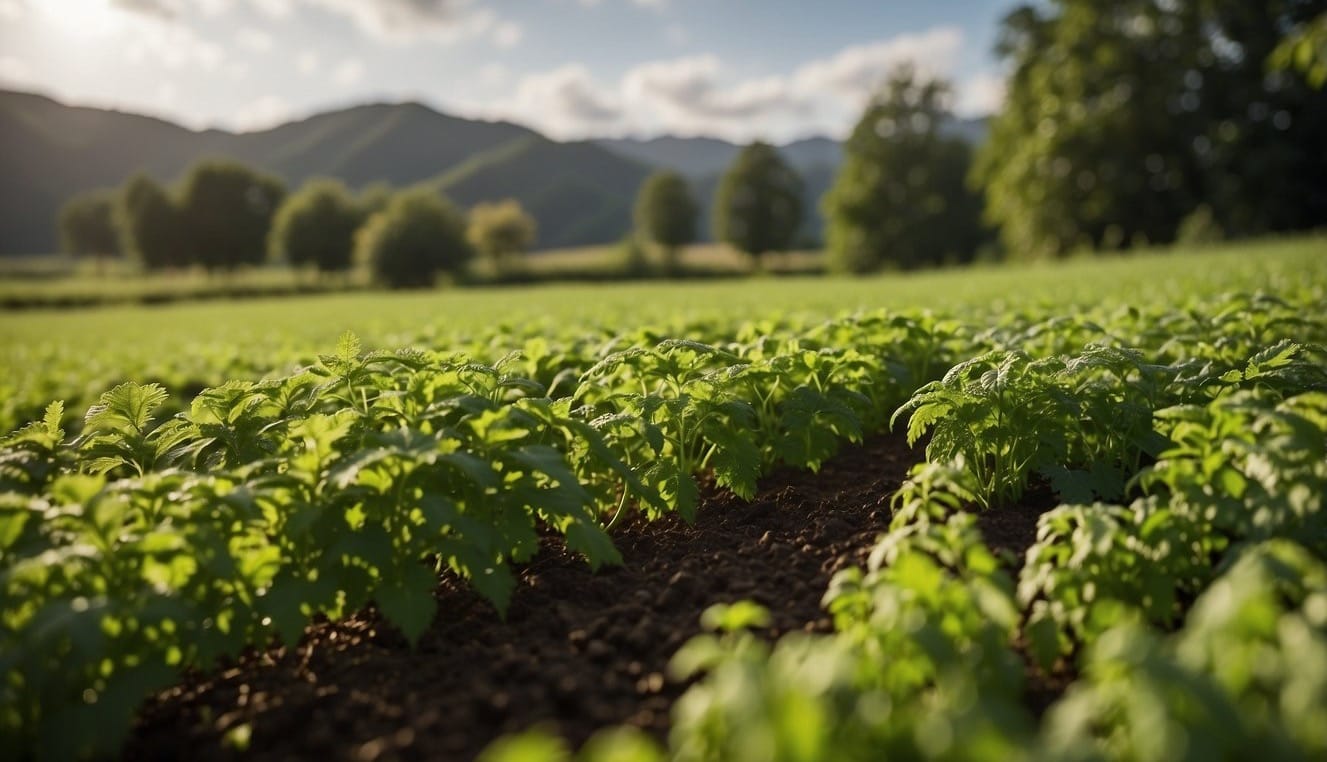
Benefits to Plants:
- Improved Drainage: Reduces risks associated with over-watering
- Pest Deterrence: Helps prevent issues such as fungus gnats
- Versatility: Can be used alone or mixed with potting soil
Your plants may thrive in PON due to the medium's ability to maintain an ideal air to water ratio, which is generally around 45% air to 55% water. This ratio helps stave off diseases and supports robust plant health.
Key Components and Ingredients
When considering Pon soil for your plants, it’s essential to understand its key components and ingredients which contribute to the medium’s unique properties.
Mineral Content
Pon soil is predominantly composed of mineral elements that provide excellent drainage and aeration. The main components of this growing medium include:
- Pumice: A lightweight volcanic rock that traps air and helps aerate the roots.
- Lava rock: Adds structure and drainage, preventing waterlogging.
- Zeolite: A mineral that helps with water retention and nutrient exchange.
- Perlite: Often included to further enhance aeration and drainage properties.
Together, these mineral stones create a stable, well-draining environment, making Pon an optimal choice for your plant's health.
Organic Versus Inorganic
Unlike traditional soil, Pon is an inorganic medium, meaning it lacks organic matter which is commonly found in standard garden soils. The absence of organic content like compost or worm castings:
- Minimizes the risk of disease due to the non-decomposing nature of the materials.
- Requires you to provide nutrients through fertilization, as Pon doesn’t naturally contain the nutrients found in organic matter.
Benefits of Using PON as a Plant Substrate
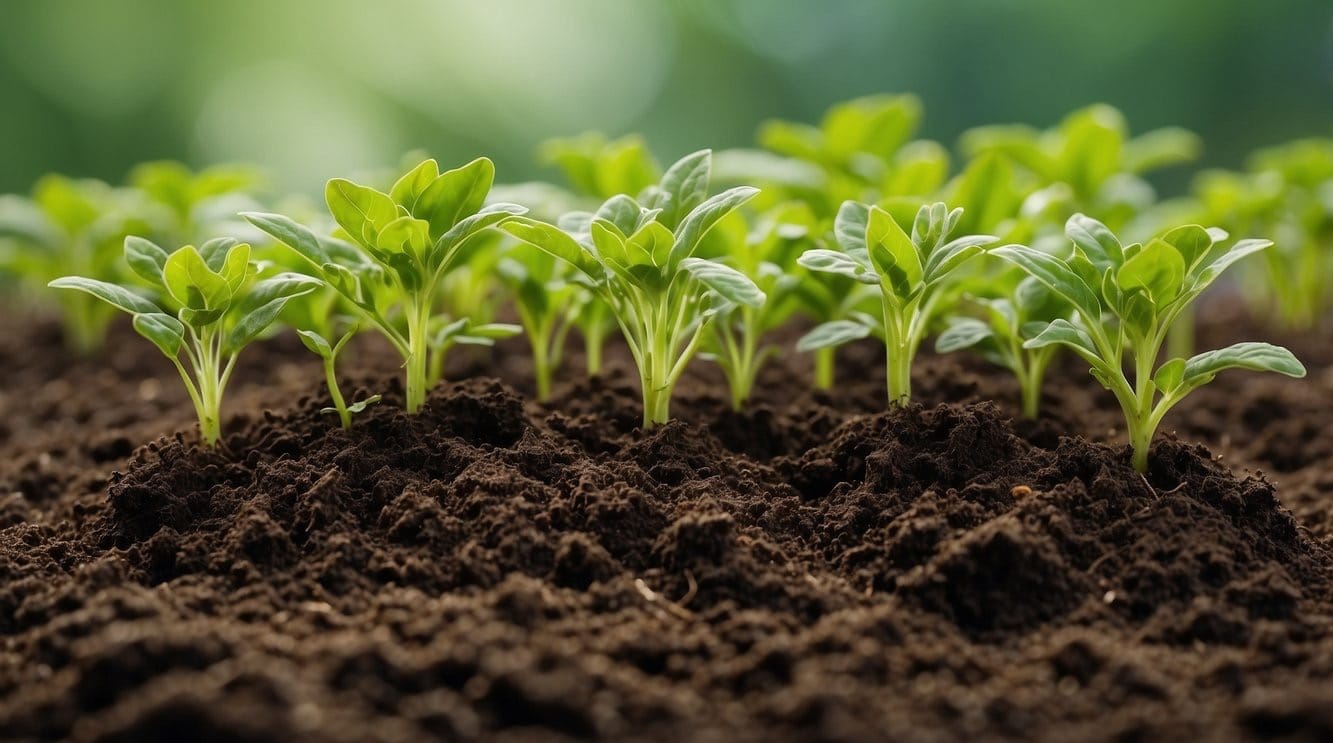
When it comes to ensuring your plants thrive, choosing the right substrate is crucial. PON, a soil alternative consisting mainly of mineral stones, lends several advantages to plant growth and root health due to its structure and composition.
Improved Plant Growth
Your plants need an optimal air-to-water ratio for enhanced growth, and PON provides exactly that. This substrate maintains consistent moisture levels without becoming waterlogged, which is key to preventing root rot and other moisture-related issues.
You'll notice that plants in PON often exhibit vigorous growth, as the roots have better access to both air and water.
Enhanced Root Health
With PON, root development becomes more robust because of the improved aeration and moisture balance within the substrate. The mineral components such as pumice and lava rocks create tiny pockets of space, which not only allow for better air circulation but also promote a stronger, more extensive root system.
Your plants, in turn, become more resilient and better equipped to absorb nutrients, setting a solid foundation for overall plant health.
Water Management and Drainage
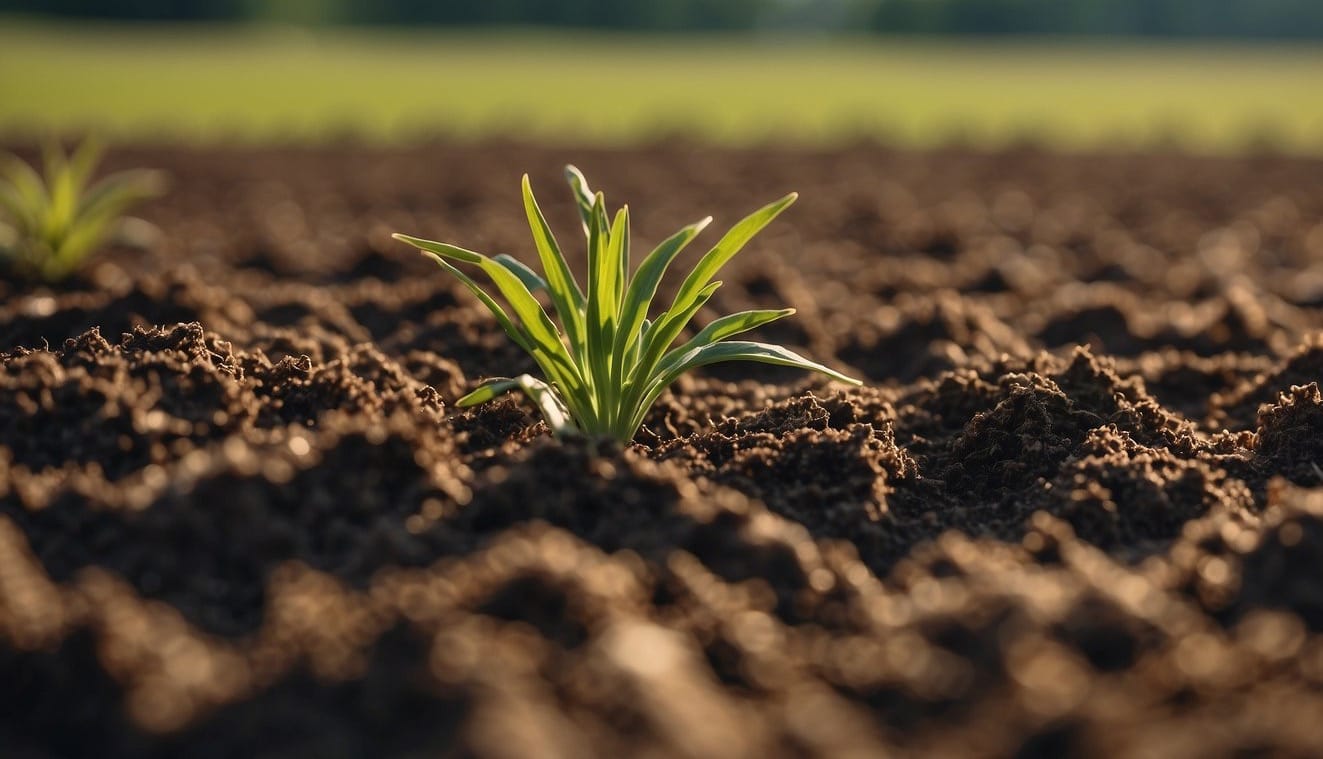
When you use PON soil, understanding its water management and drainage characteristics ensures healthy plant growth. PON soil's design supports both efficient moisture retention and proper drainage, which are critical to prevent root rot and other water-related issues.
Water Retention
PON soil is skillfully crafted to balance moisture levels within your potting environment. Thanks to the unique structure of PON soil, which often includes components like zeolite, lava, and pumice, it retains water differently than traditional soil.
Here's what you need to know:
- Watering: When you water plants in PON soil, it soaks up moisture quickly and distributes it evenly throughout the medium.
- Moisture: The retained water is then available for your plant's roots on an as-needed basis. This ensures that the plant stays hydrated without remaining soggy.
Table showcasing the comparison of PON soil moisture retention to traditional potting soil:
| PON Soil | Traditional Potting Soil |
|---|---|
| Even moisture distribution | Can have uneven moisture areas |
| Holds water without waterlogging | May retain excess water near the bottom |
Capillary Action in PON
The PON soil leverages capillary action to deliver water effectively from the bottom of the pot to the plant roots. This principle is especially relevant in self-watering pots, where PON soil shines:
- Capillary Action: Capillary action draws water up through the PON substrate from the water reservoir at the bottom of a self-watering pot.
- Self-Watering Pot: The roots receive moisture as they need it via this action, reducing the frequency of manual watering.
Steps to ensure effective capillary action in PON soil:
- Establishing the Water Reservoir: Make sure your self-watering pot has an adequate water reservoir. This is where capillary action begins.
- Initial Watering: After repotting in PON, water the plant from the top to ensure the substrate is evenly wet and activate the capillary mechanism.
Plant Care and Maintenance
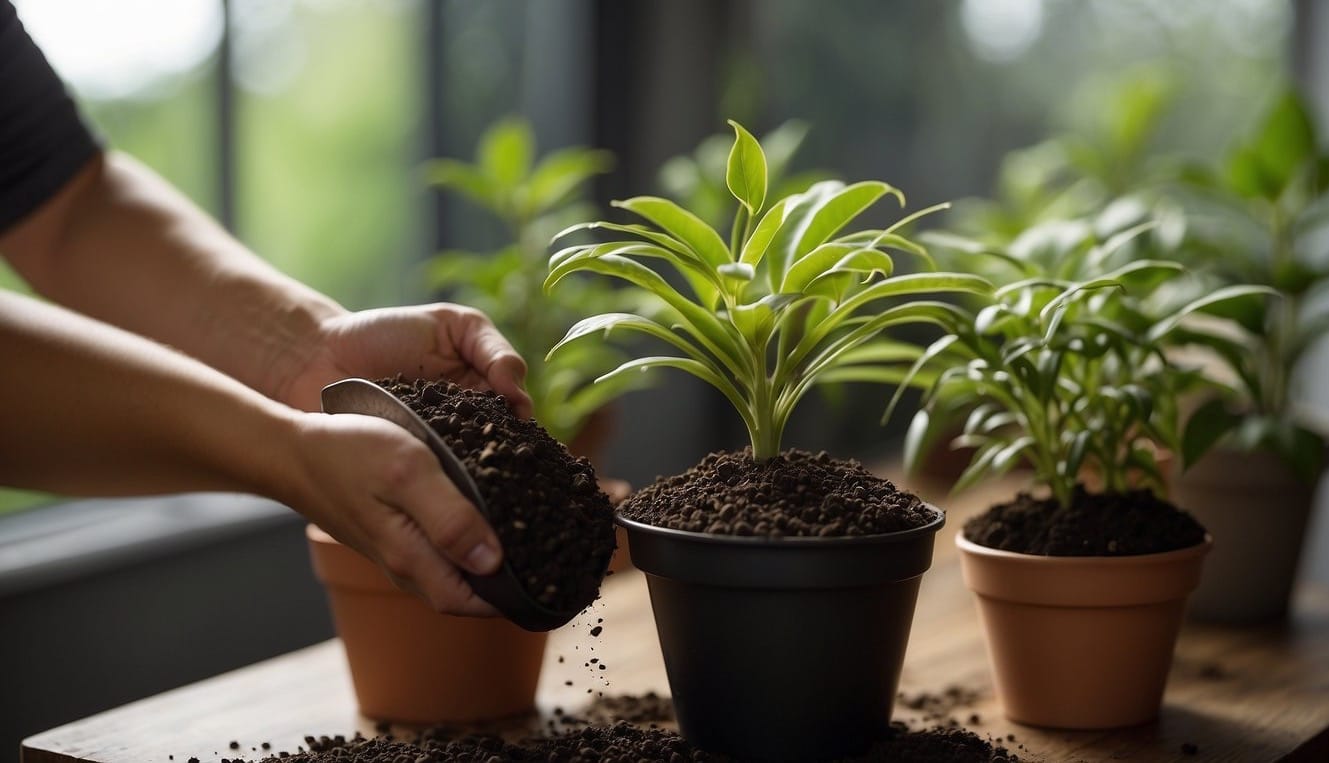
When using Pon soil, your plant care regimen should be tailored to meet the specific feeding requirements and to ensure effective disease and pest prevention, promoting a healthy growth environment for your plants.
Feeding Requirements
Pon, a substrate often used as an alternative to traditional soil, has distinct feeding requirements. Being an inert medium, Pon doesn't contain nutrients, thus necessitating regular fertilization.
You should introduce nutrients through either slow-release fertilizer or liquid fertilizer.
- Slow-Release Fertilizer: Incorporate granular, slow-release fertilizer into the Pon at the beginning of the growing season, as it will gradually provide nutrients over time.
- Liquid Fertilizer: Apply a diluted liquid fertilizer solution with watering. This allows you to control nutrient distribution and adjust the amount of food your plants receive.
Use these fertilizers according to package instructions, ensuring not to over-fertilize, which can harm your plants.
Disease and Pest Prevention
To guard against disease and pests, such as fungus gnats, ensure that the Pon remains well-drained and not overly saturated. Pon's structure promotes airflow and prevents waterlogging, which is crucial in preventing root rot and other diseases.
Maintenance Tips:
- Regularly inspect plants for signs of pests and disease.
- Implement preventative measures, like neem oil or insecticidal soap, only if necessary.
- Keep the plant environment clean to reduce the risk of infestations.
Following these guidelines, you can maintain robust plant health and prevent common issues associated with indoor plant care.
PON in Plant Propagation and Repotting

Leveraging PON substrate can transform your approaches to plant propagation and repotting, reducing the risk of root rot while enhancing the moisture distribution for your plants' root systems.
Propagation Techniques
When propagating plants, your primary goal is to encourage robust root development. PON, also known as "pon substrate," can facilitate this by providing an airy, inorganic medium that supports water and airflow.
For cuttings, start by placing them in a mixture of PON and water. Wick systems or semi-hydroponic setups can be quite beneficial here, as they allow for controlled water uptake, curtailing the risk of overwatering which often leads to root rot.
- Steps for Propagating with PON:
- Select a healthy cutting with 2-3 leaves and a node.
- Place wick in the container's water reservoir.
- Add a layer of PON, ensuring contact with the wick.
- Insert the cutting into PON, guaranteeing node immersion.
Repotting into PON
Repotting your plants into PON may come about when shifting them to a semi-hydroponic system or when they have outgrown their current medium. Begin by carefully removing your plant from its current soil, ensuring minimal damage to the root system. Clean the roots thoroughly to remove any old substrate. Fill the new pot with a layer of PON, position the root ball, and then add more PON to cover the roots.
- Checklist for Repotting into PON:
- Remove plant and cleanse roots.
- Ensure the pot has a water reservoir for a wicking system.
- Layer PON at the bottom of the pot.
- Place the plant in and cover completely with PON.
- Water until moisture is evenly distributed within PON.
Exploring Specific Plant Varieties with PON

When incorporating PON into your plant care regimen, it's essential to understand how different plant varieties respond to this substrate. Below, you'll find insightful details on how aroids and succulents, including cacti, thrive in PON.
Aroids and PON
Aroids, such as Philodendron, Monstera, and Anthurium, display a positive affinity for PON substrate. Its excellent moisture retention and aeration qualities create an ideal environment for these typically tropical plants. For example, your Monstera benefits from the well-balanced moisture distribution of PON, which mimics its natural rainforest habitat where the soil tends to remain evenly moist but well-drained.
- Hoya and PON: This subgroup of aroids, characterized by their waxy leaves, can flourish in PON as it prevents root rot by allowing excess water to flow through the pot.
- Philodendron and PON: Philodendrons gain from PON's drainage capabilities, especially for varieties like the heartleaf philodendron (Philodendron hederaceum), which prefers moist but not soggy soil conditions.
- Alocasia and PON: Members of the aroid family like Alocasia prefer PON for its ability to maintain a stable moisture level, which is crucial for their growth.
Succulents and Cacti in PON
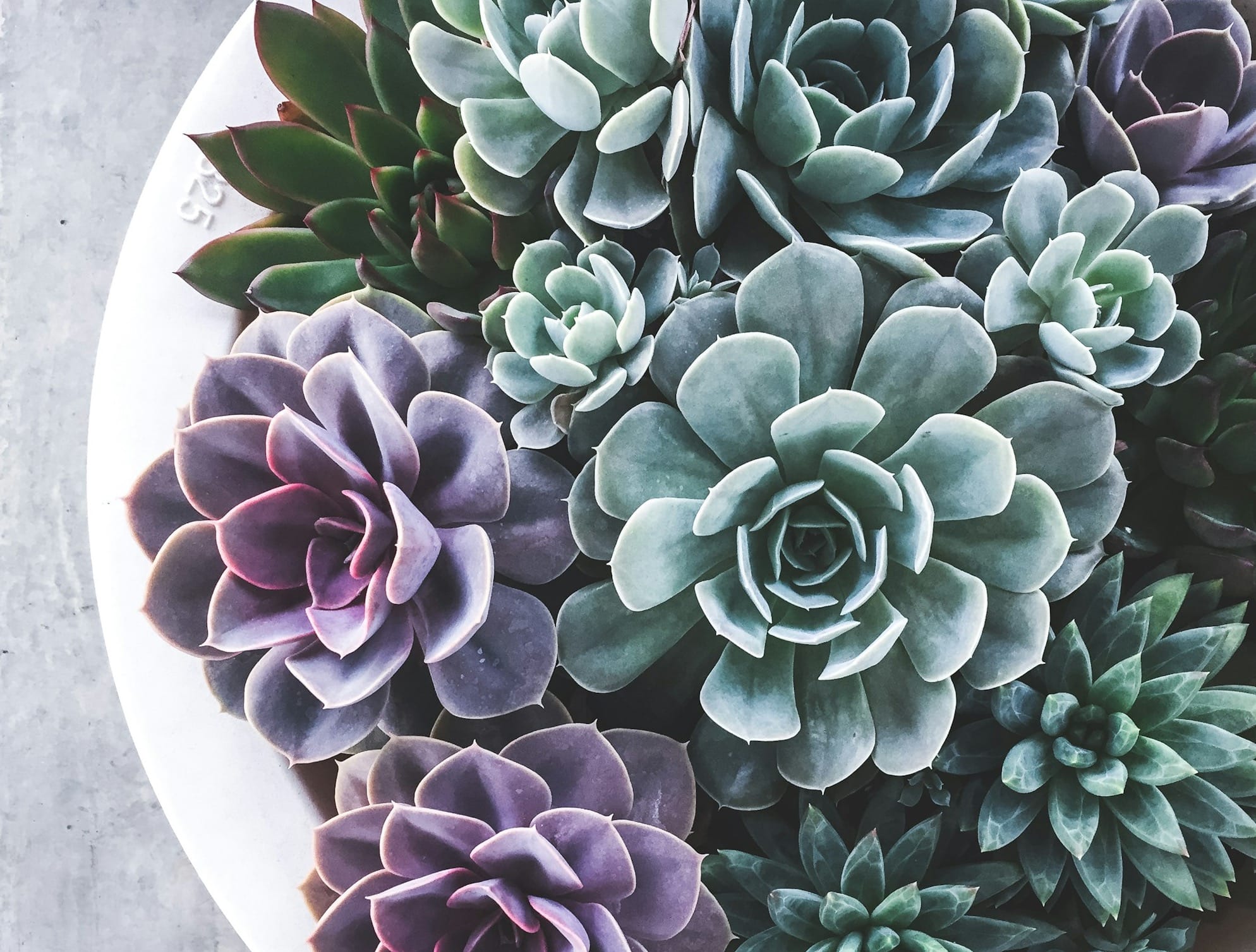
Succulents and cacti are known for their resilience and low-water needs. PON suits them particularly well due to its fast-drying nature, ensuring that their roots are not left in wet substrate, which could cause rot. PON's structure allows for good air flow around the roots, which is beneficial for these desert-dwellers.
- Succulents in PON: Varieties such as Echeveria and Sedum thrive in the well-drained, dry conditions that PON provides.
- Cacti in PON: For cacti, which are even more drought-tolerant, PON allows for a mimicry of their natural, arid conditions by facilitating quick drainage while providing occasional moisture, exactly what they require to flourish.
Considerations and Alternatives
When exploring PON as a soil alternative, it's crucial to consider the type of mix that fits your needs, as well as the costs and availability. Different approaches can affect your plant's environment, maintenance needs, and overall health.

Commercial Versus DIY PON
Commercial Pon Mix:
- Pros: Ready-to-use, professionally balanced, often includes slow-release fertilizers, and reduces overwatering risks.
- Cons: Higher price, specific brands like Lechuza Pon may not be available everywhere.
DIY Pon Mix:
- Pros: Customizable to specific plant needs, may be more cost-effective, satisfaction of self-preparation.
- Cons: Requires understanding of proper ratios; time-consuming; risk of getting the balance wrong, leading to poor plant health.
Cost and Accessibility
Price and Availability Factors:
- Cost-effectiveness is a concern, especially for extensive plant collections. Commercial Pon can be more expensive than traditional potting soil.
- Weight and shipping can affect cost – Pon is often lighter than potting soil, which can save on shipping.
- Local availability varies; some regions may have easy access to commercial Pon, while others might find DIY materials like moss, LECA, or terrarium components more accessible.
Adjusting Your Approach:
- Consider how often you are willing to adjust your plant care routine. Pon generally promises a lower-maintenance regimen.
- Temperature and moisture control can be more consistent in Pon, making it an attractive option for delicate plant parents and collectors.
Frequently Asked Questions
To enhance your understanding of PON soil and its applications in gardening, the answers to these frequently asked questions will address the composition, benefits, and usage of this unique growing medium.
What are the components of PON soil?
PON soil, a soilless growing substrate, typically comprises materials like zeolite, lava, pumice, and includes slow-release fertilizer. These components are chosen for their ability to provide excellent aeration and moisture retention.
What advantages does PON soil offer for plant growth?
PON soil offers a well-balanced moisture distribution, ensuring that the soil is not too wet at the bottom or too dry at the top. This promotes healthier root systems and can help reduce the time spent on plant care.
What are the alternatives to Lechuza PON for plants?
If Lechuza PON is not available, you can look for other soilless mixes that include components like coarse sand, perlite, and vermiculite. These alternatives will similarly support semi-hydroponic growing environments.
Can PON soil reduce the risk of root rot in plants?
By providing superior aeration and preventing the accumulation of excess water around the roots, PON soil can significantly reduce the likelihood of root rot in plants.
Where can one purchase PON soil for horticultural use?
PON soil can be bought from garden centers, plant nurseries, or online retailers that specialize in horticultural supplies. Look for products specifically labeled as semi-hydroponic or hydroponic growing mediums.
